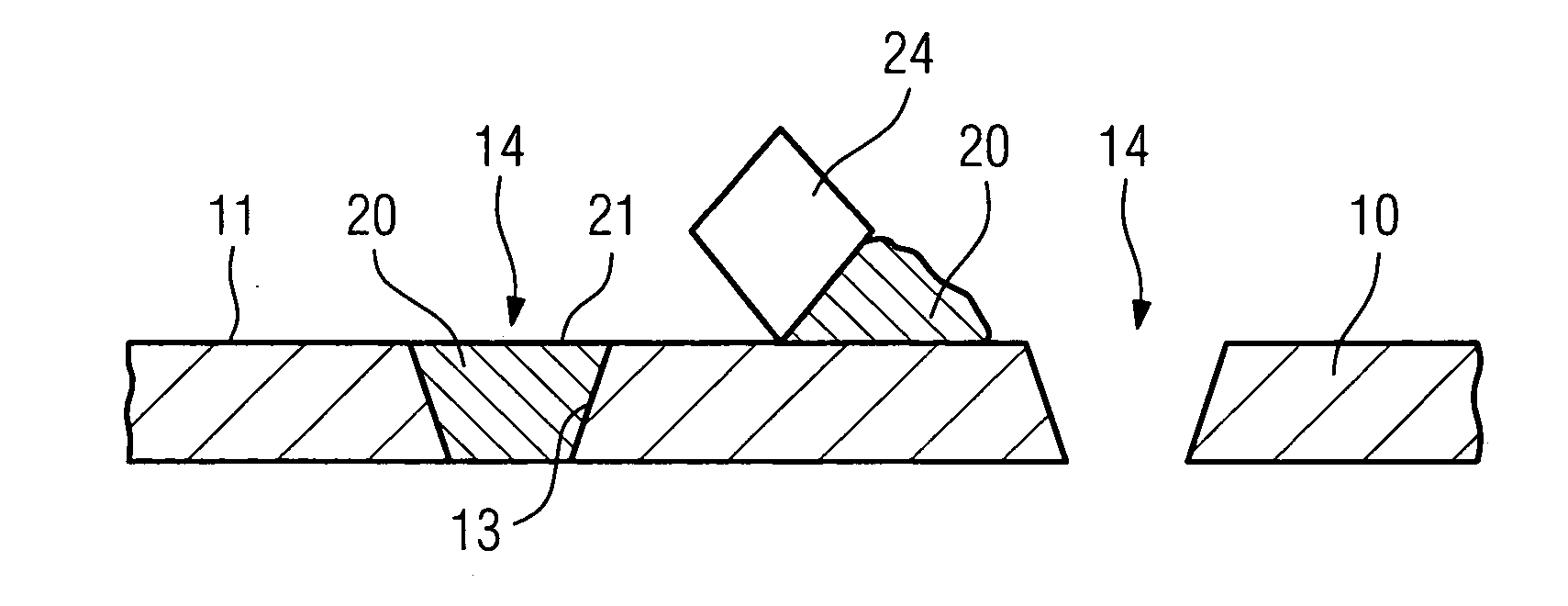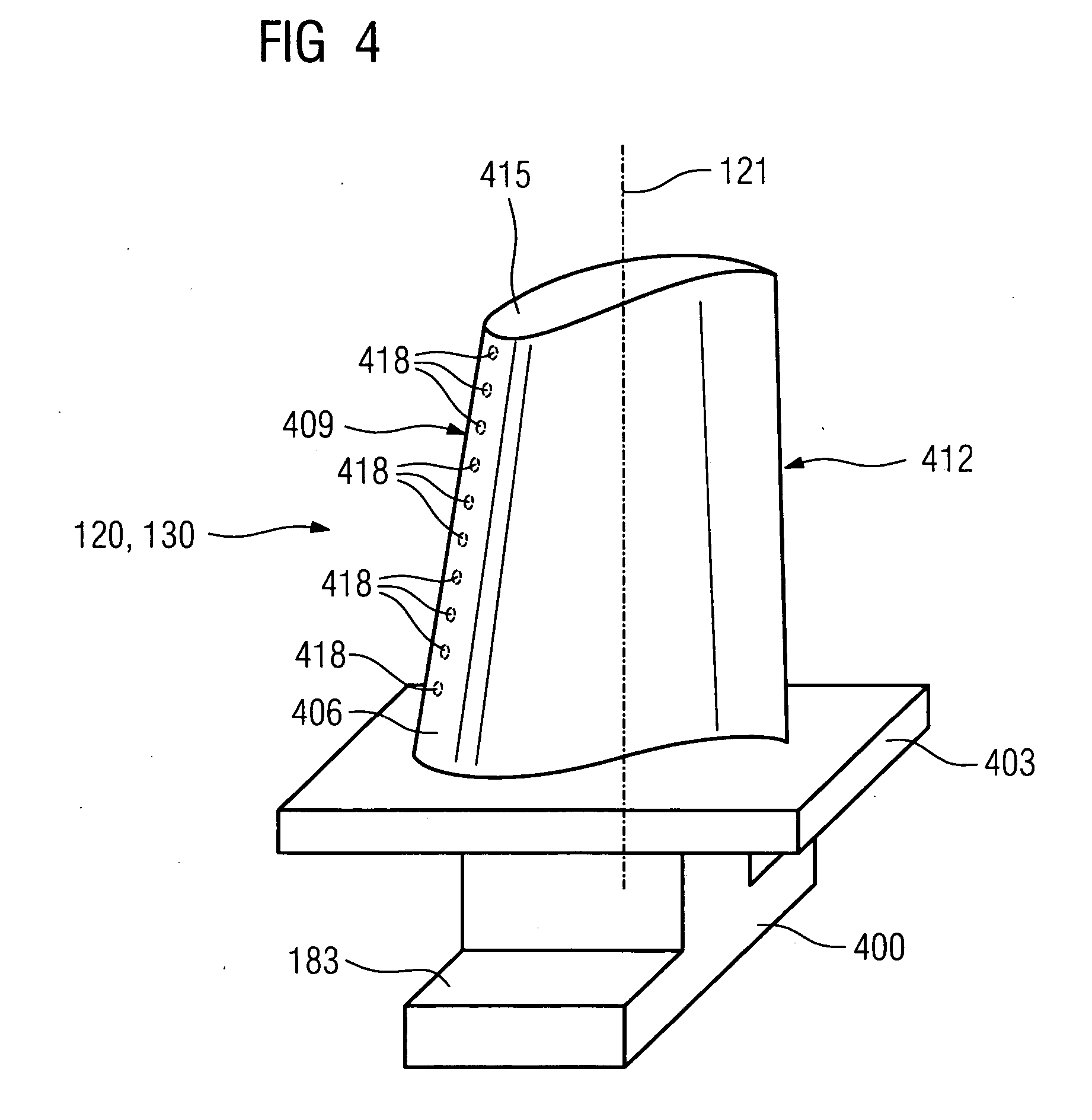Process for protecting openings in a component during a treatment process, preventing penetration of material, and a ceramic material
a technology for ceramic materials and treatment processes, applied in the direction of resistive material coatings, machines/engines, group 4/14 element organic compounds, etc., can solve the problems of re-coating components, worms, and no longer being able to operate, and achieve the effect of increasing the content of ceramic materials
- Summary
- Abstract
- Description
- Claims
- Application Information
AI Technical Summary
Benefits of technology
Problems solved by technology
Method used
Image
Examples
Embodiment Construction
[0042]FIG. 1 diagrammatically depicts an excerpt from a turbine blade or vane 10, 120, 130 (FIGS. 4, 6). The following explanations also apply to other components which have holes, such as for example heat shield elements 155 (FIG. 5).
[0043] The turbine blade or vane 10 is joined to a baseplate 403 and has a number of cooling-air openings 14, of which in the present illustration only those which are located in the region of the leading edge 409 of the turbine blade or vane 10 are illustrated. Like the turbine blade or vane 10, the baseplate 403 has cooling-air openings 16, the diameter of which, in the present example, is larger than the diameter of the cooling-air openings 14 in the turbine blade or vane 10.
[0044] The cooling fluid, generally cooling air, is fed to the cooling-air openings 14 in the turbine blade or vane through cooling-air ducts, which are not illustrated and are arranged in the interior of the turbine blade or vane 10.
[0045] The turbine blade or vane 10 and th...
PUM
| Property | Measurement | Unit |
|---|---|---|
| particle sizes | aaaaa | aaaaa |
| electrically conductive | aaaaa | aaaaa |
| electrical conductivity | aaaaa | aaaaa |
Abstract
Description
Claims
Application Information
 Login to View More
Login to View More - R&D
- Intellectual Property
- Life Sciences
- Materials
- Tech Scout
- Unparalleled Data Quality
- Higher Quality Content
- 60% Fewer Hallucinations
Browse by: Latest US Patents, China's latest patents, Technical Efficacy Thesaurus, Application Domain, Technology Topic, Popular Technical Reports.
© 2025 PatSnap. All rights reserved.Legal|Privacy policy|Modern Slavery Act Transparency Statement|Sitemap|About US| Contact US: help@patsnap.com



